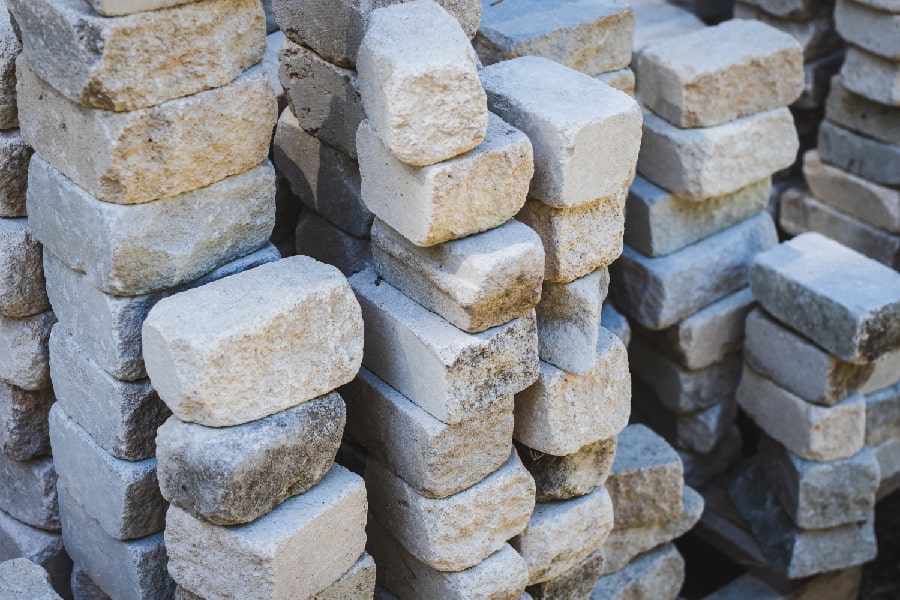Granite is one of the most popular and preferred construction materials in use today. It can be used for a wide range of applications, including countertops, flooring, walls, and other indoor or outdoor surfaces. However, not all rocks are created equal when it comes to granite. In this article, we will explore the specific criteria that a rock must meet in order to be considered true granite. We’ll delve into its composition and properties in order to gain a fuller understanding of what makes this material so special and desirable among builders and enthusiasts alike. So buckle up as we take an exciting journey through the world of geology!
Identify the Types of Minerals That Granite Is Composed Of
Granite is composed of a variety of minerals, each contributing to its unique properties and characteristics. The three most prominent minerals found in granite are quartz, feldspar, and mica. Quartz is the most common mineral in granite and gives it its hardness and durability. Feldspar is another important mineral that contributes to the rock’s strength and stability. Mica provides granite with its distinct appearance, giving it a sparkling or shimmering effect.
In addition to these primary minerals, granite may also contain trace amounts of other elements such as iron oxide or biotite. These minor components can affect the coloration or visual texture of the stone but do not significantly alter its overall composition.
Overall, understanding the makeup of granite is critical for anyone working with this material in construction or design projects. By knowing which specific minerals contribute to the properties of a given piece of granite, designers and consumers alike can make informed decisions about how to best utilize this valuable resource in their work.
Why these Minerals are Necessary to Be Classified as Granite
There are several minerals that must be present in order for a rock to be classified as granite. The most important of these minerals is quartz, which makes up at least 20 percent of the rock’s composition. It provides strength and durability to granite and helps it resist weathering and erosion over time. Another critical mineral is feldspar, which gives granite its distinctive pink or gray coloration.
In addition to quartz and feldspar, biotite and hornblende are also essential components of true granites. Biotite is a dark-colored mineral that contributes to the rock’s overall texture while hornblende adds a greenish tint along with additional strength properties. These four minerals work together to create an interlocking structure within the rock, providing further stability against stress and pressure.
The presence of these specific minerals enables granite to exhibit unique qualities such as its impressive hardness, resilience against weathering agents like wind and water, impermeability against moisture penetration into spaces between grains, low thermal expansion rate during temperature fluctuations (making it ideal for outdoor use), scratch-resistant surface finishing options like polishing or honing etc., all contributing towards its diverse applications in construction projects worldwide. Such strict criteria ensure that only truly high-quality rocks can be classified as genuine granite – cementing its standing among top tier construction materials today
How the Texture and Color Can Help Determine if Its Granite
Texture and color can serve as two important criteria in determining whether a rock is granite. The texture of granite is typically coarse-grained, meaning that the individual mineral crystals are large enough to be seen without the aid of magnification. This characteristic sets it apart from other types of rocks like basalt or gneiss, which have smaller crystal grains.
In terms of color, most granites are made up of a combination of white, gray, black, and pink minerals such as quartz, feldspar, and mica. Specific varieties may exhibit different colors depending on their unique composition but generally speaking, true granite will display these four characteristic hues in some form or another.
Hardness and Resistance to Weathering
Hardness and resistance to weathering are two critical properties that must be considered when evaluating a rock’s suitability for use as granite. Granite is known for its remarkable strength and durability, which makes it an ideal choice for construction projects in various environments. The hardness of granite is measured using the Mohs scale, with a score of 6-7 being typical for most varieties. This means it can withstand significant pressure without scratching or chipping, making it well-suited to high-traffic areas like kitchen countertops.
In addition to hardness, resistance to weathering is another essential property that distinguishes true granite from other types of rocks. Granite must be able to resist the deteriorating effects of exposure to sunlight, rainwater, wind erosion and temperature extremes over long periods of time. As such, granites that possess high levels of mineral resiliency such as quartz and feldspar will have superior protection against chemical breakdown caused by acid rain or climate change.
Conclusion
We have discussed the qualities that make a rock true granite. We now understand that granite is composed of three main minerals; quartz, feldspar, and mica. In order to be considered granite, these minerals must be present in certain proportions and arranged in a specific pattern known as a granitic texture. Granite is also distinguished by its durability, strength, and ability to resist weathering.
Granite has been used for centuries due to its beauty, durability, and versatility. It remains one of the most popular construction materials today. As architects and designers continue to push boundaries with new techniques, styles and designs, it’s likely we will continue to see innovations using this everlasting material.

